New Boston Historical Society
New Boston, New Hampshire

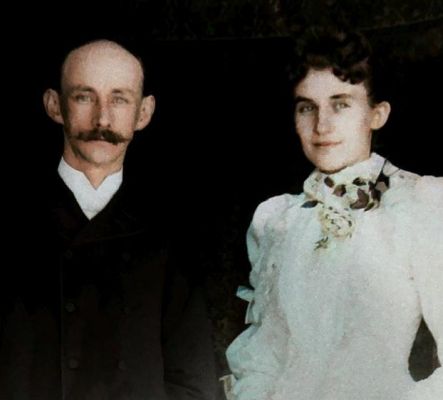
Warren Skinner and Emily Atwood on their wedding day — 1890
Colorizing Historical Photos
As of October 2022 there were 1,700 images on this website. Almost all of them have been digitally enhanced.
I do not use tools like Photoshop to change the historical record; all I do is (1) adjust brightness and contrast, (2) eliminate scratches and blemishes when possible, and (3) crop and resize photos to optimize them for the Internet. Google Analytics reports that more than half of our visitors access our website with mobile devices like iPhones, so I need our photos to be clear on a six-inch display.
I've done this digital enhancement for over ten years. Now I wonder, should I "colorize" photos in our collection?
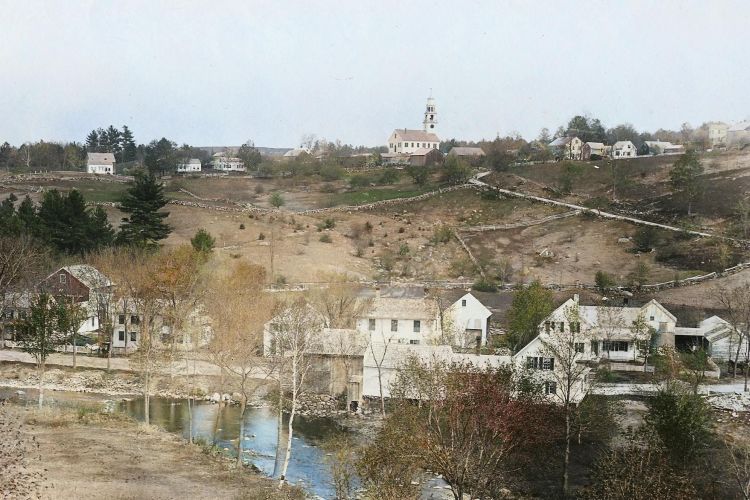
This colorized 1890s photo of New Boston's "Church on the Hill" looks as if it were taken yesterday.
Colorization is the enhancement of a black&white (or "grayscale") image by the addition of color. Our Postcard page describes the hand-colored postcards that Frank Swallow and his "Swallow girls" printed in the first half of the 20th century, and we've an 1860s hand-colored photo of Sgt. Jacob Langdell at the top of our Civil War page, but the word "colorization" usually describes computerized processes.
Recently I read about an on-line tool which uses Artificial Intelligence (AI) to colorize black&white photos. Palette.fm is not the first colorization tool to be available nor is it the most powerful, but it's the first tool I experimented with, and the initial results convinced me I need to consider more use of colorization.
To over-simplify the process, AI colorization involves the use of a computer to recognize objects in a black&white photograph and make reasonable guesses about what color those objects were in real life. The computer assumes that the sky is blue, grass is green, and bricks are red. Of course the sky is not always blue, grass can be brown, and so forth. My role as the tool operator is to override the computer's guesses with my own guesses, hopefully informed by text information from our historical files and/or other photos or paintings of the same subject.
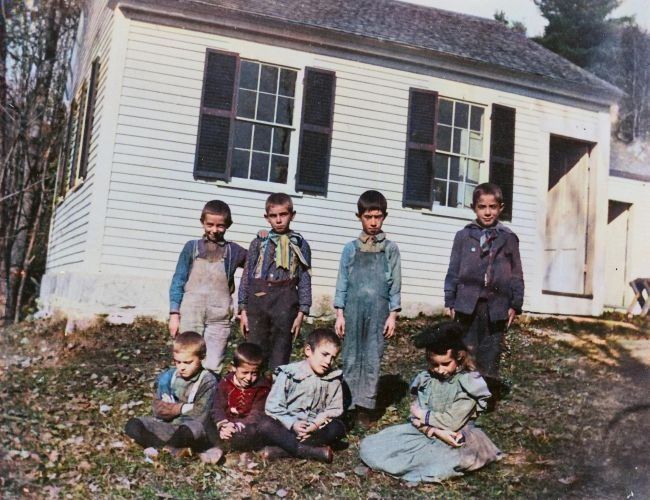
Schoolhouse #4 on Meadow Road
The Historical Society created this website to share our town's history with on-line viewers from New Hampshire and around the world. However, we're also an in-person resource to schoolchildren from the New Boston Central School, and these visitors range in age from 6 to 13. I think you'll agree that a color photo is more "relatable" to 7-year-olds than black&white, and that they're more likely to recognize themselves in the above photo from 1899 now that I've colorized it.
You may ask: was the dress worn by Schoolhouse #4's only girl student actually blue? I don't know — does it matter? Now if I were to add color to a black&white photo of a Civil War soldier in uniform, then it would be important to get the colors exactly right.
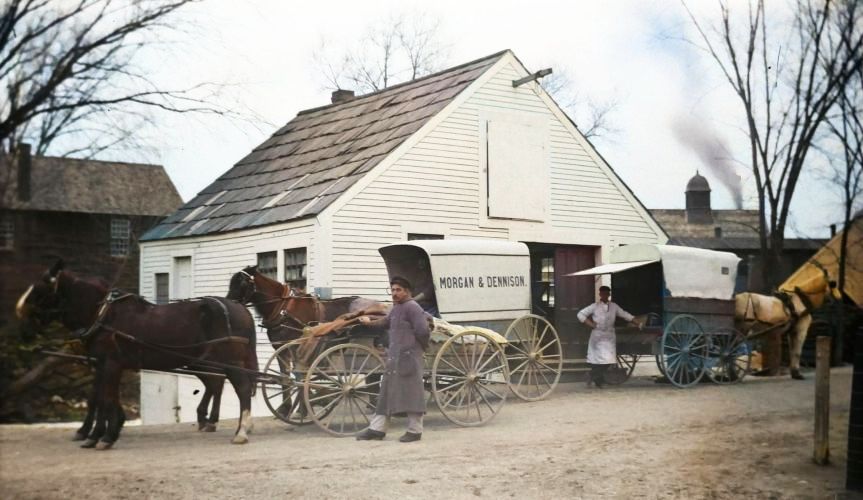
Mill Street, New Boston
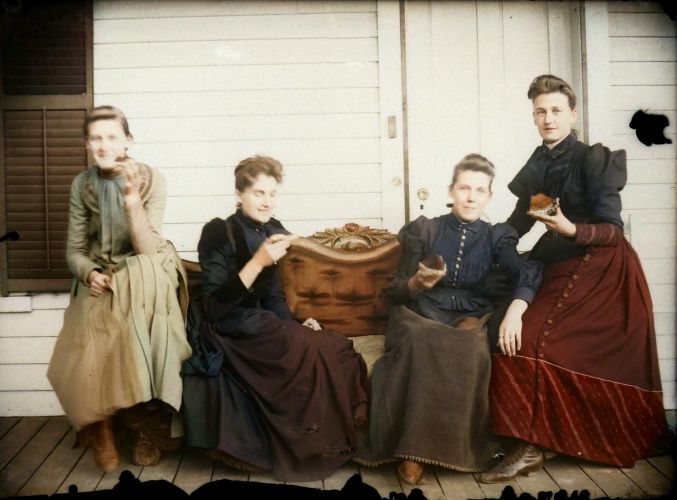
Thanksgiving Day pie — 1890
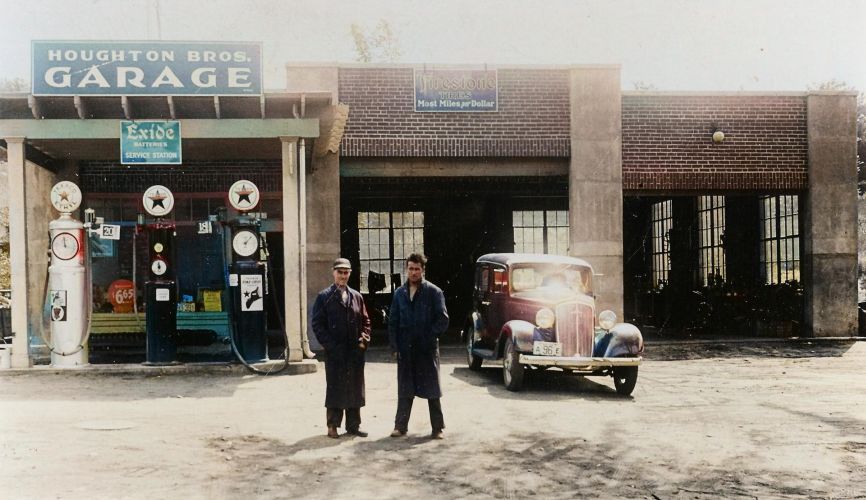
Houghton Brothers' garage on River Road — 1940s
Color draws your attention to details you might otherwise have missed... I'll need to think some more about when and where to use it. As always, your comments are welcome.
-- Dan Rothman townfarm@comcast.net 2022
